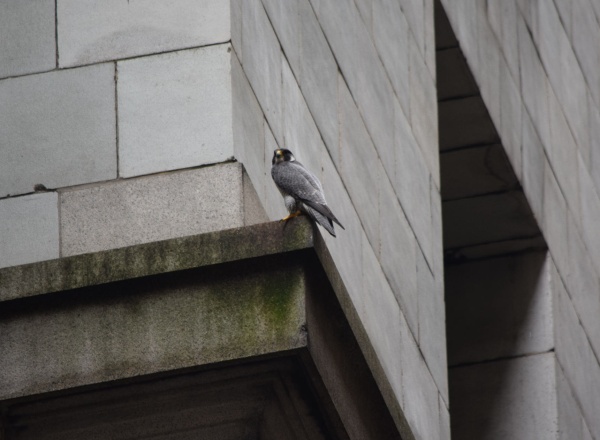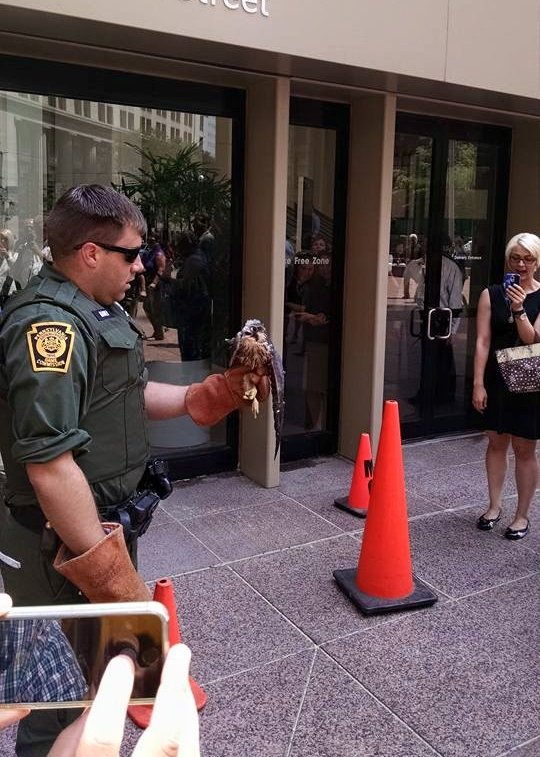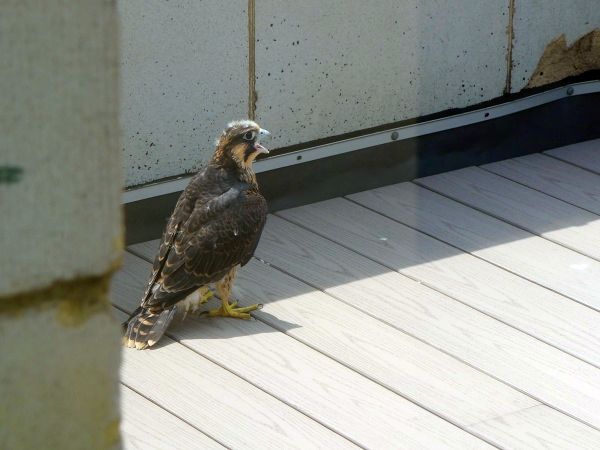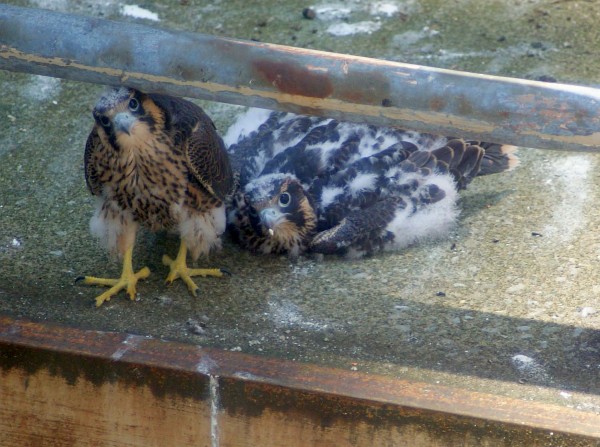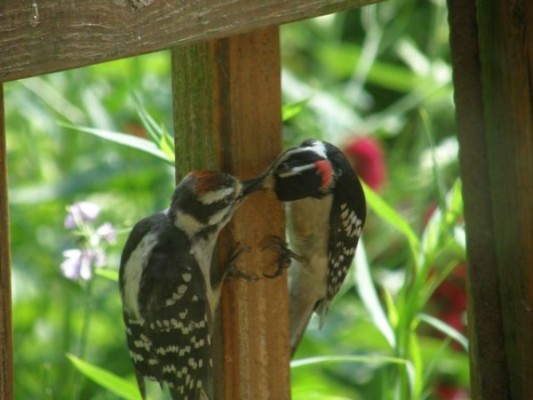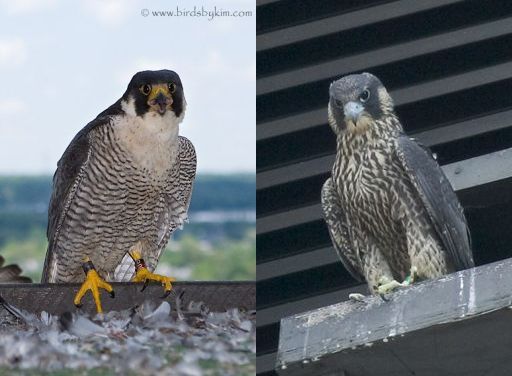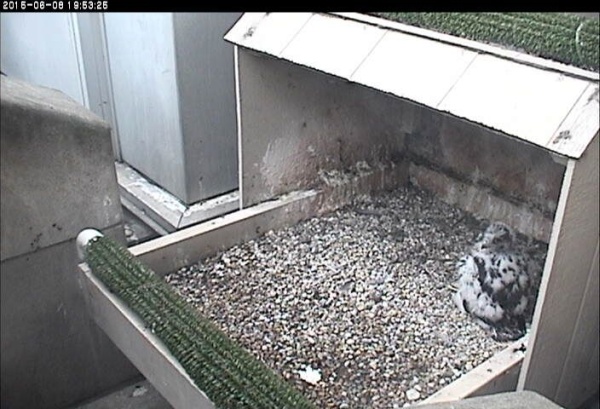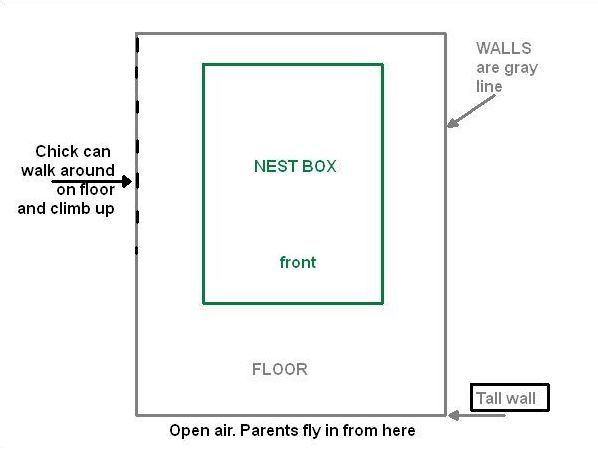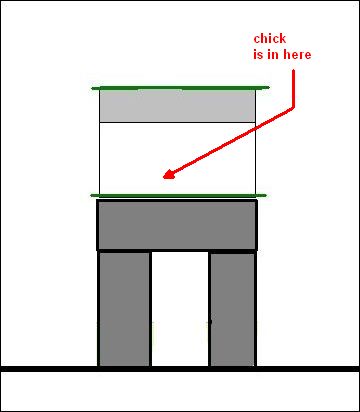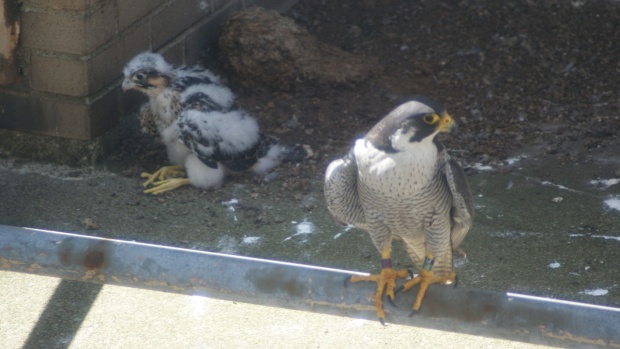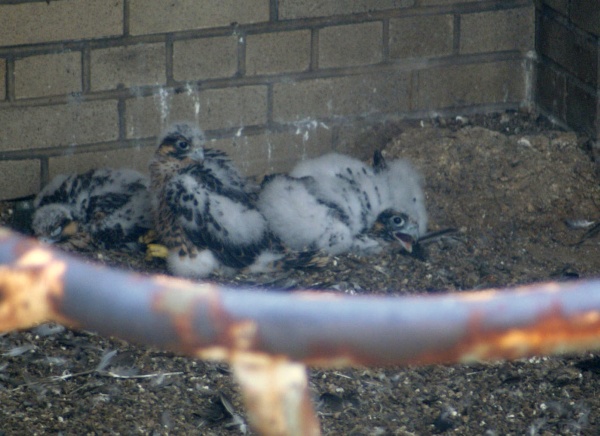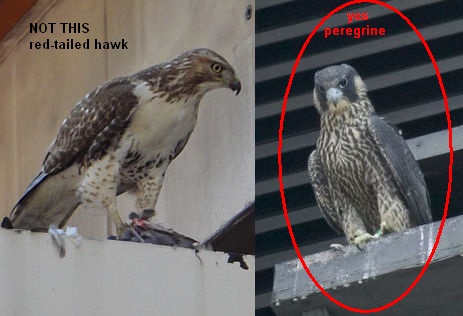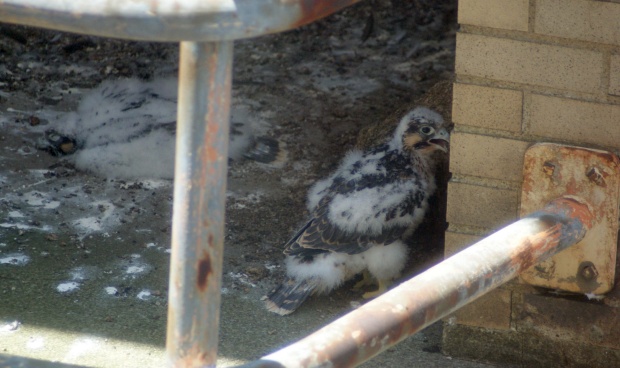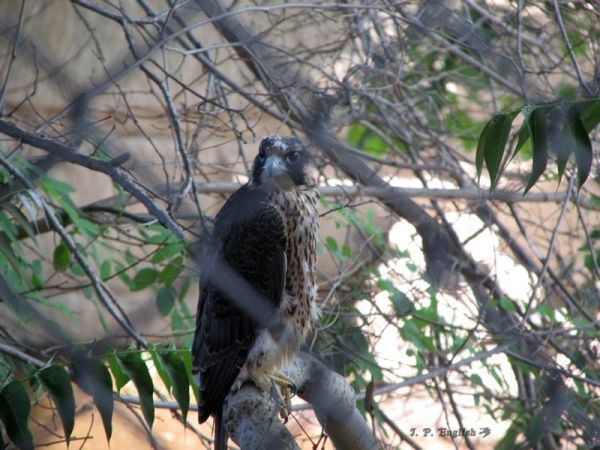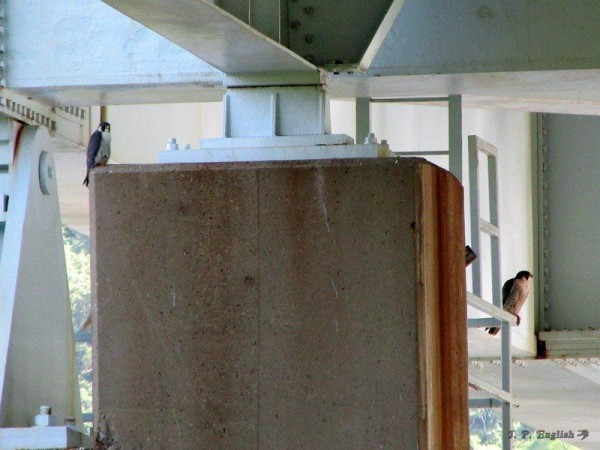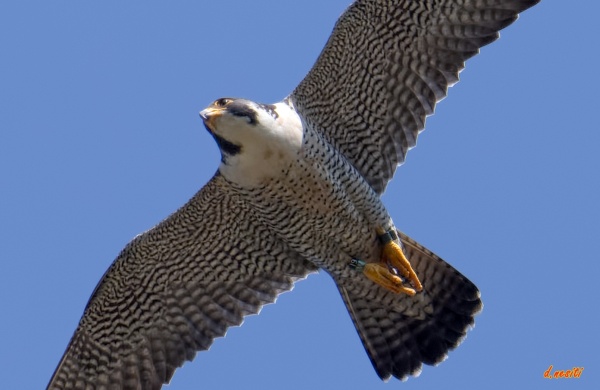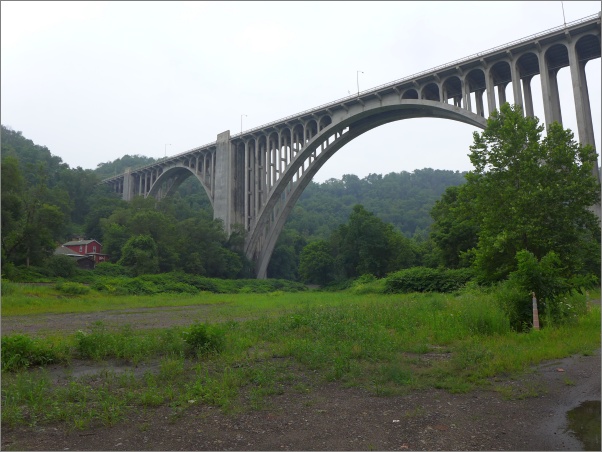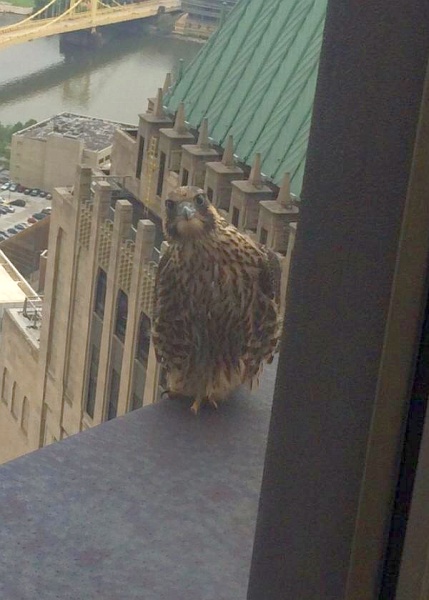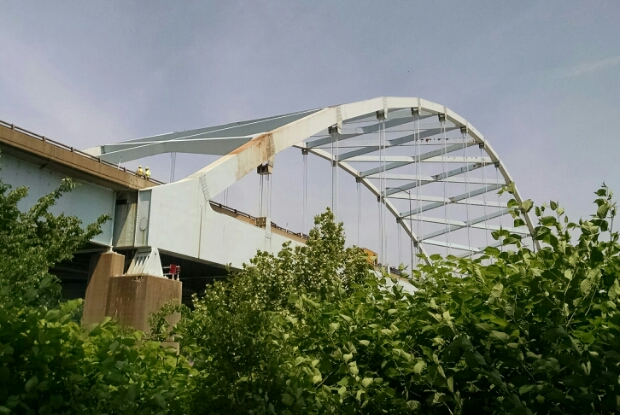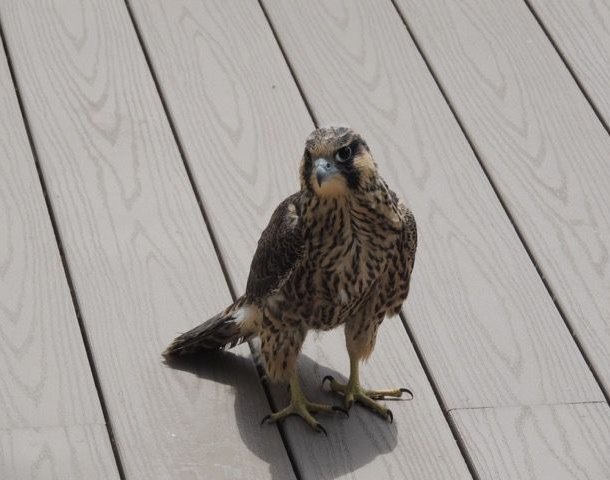
Fledgling birds are hard to keep track of. Hard on their parents. Really hard for humans! Yesterday’s Peregrine Fledge Watch in Downtown Pittsburgh was a case in point.
By Saturday evening Fledgling#2 had flown for the first time and ended his day on the Union Trust Building. Sunday morning he was still there when Doug Cunzolo arrived. Soon the bird flew to the Courthouse ledge, then an hour later to Union Trust on Grant Street. So far so good.
The bird’s parents had their hands full babysitting #3 at the nest and persuading #1 to fly high. They were busy. We watched #2.
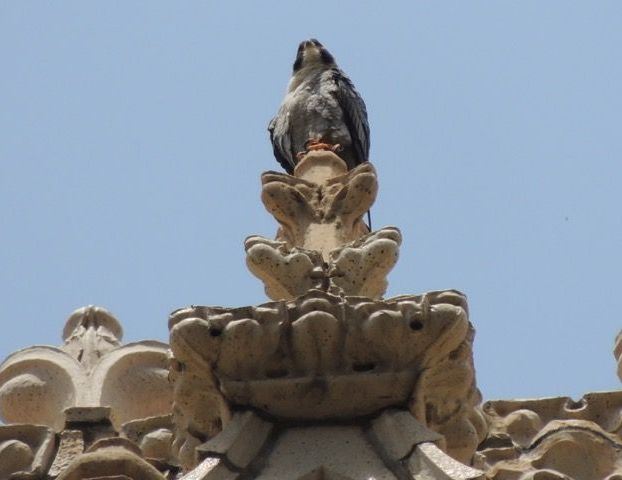
Just before noon it started to rain so we stopped watching on Grant Street and sheltered under the scaffolding around the corner. We thought #2 wouldn’t fly in the rain. Hah!
When the rain was over he was gone. All five of us searched the ground, buildings and plazas along Grant Street and Fifth. We knew he wouldn’t be hit by a car because traffic was at a standstill, detoured for the Pride Parade.
Fledge Watch continued, we left, others arrived. Then at 2:30pm Terry Wiezorek was watching on Fifth Avenue when PGC Officer Kline walked up with a cage and said, “Are you looking for this?”
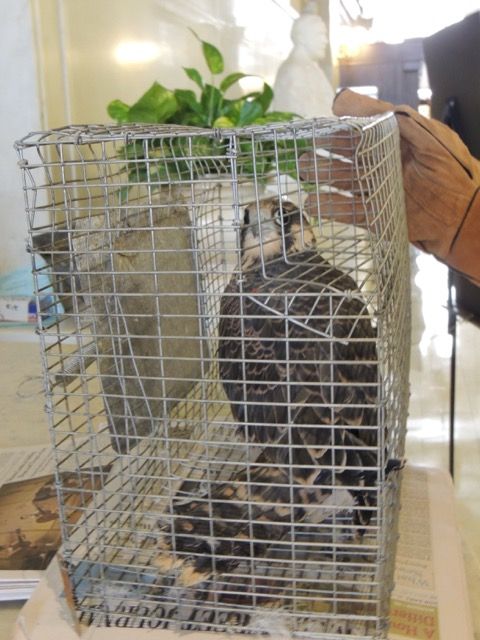
#2 had been on the ground at BNY Mellon. Who knew!
By 4:00pm Terry knew #2 was on the rescue porch and #3 was at the nest. She could hear a fledgling, perhaps #1, calling for food. She watched Dori and Louie for clues. Where is #1?
Hard to keep track of!
(photos by Terry Wiezorek)
p.s. After last night’s heavy rain (2.25 inches!) the birds probably won’t fly for a while and may be even harder to find. More news later.
p.p.s. 9:15am all 3 accounted for: 2 on UTB, one at nest.
UPDATE, June 16, 9:40am: #1 on BNY Mellon ledge on 5th Ave at 6th across from ivy-covered old jail wall (a different building than Main), #2 on dormer at roof line of Union Trust, #3 sleeping in nest, Dori on Courthouse knob, Louie off hunting.
